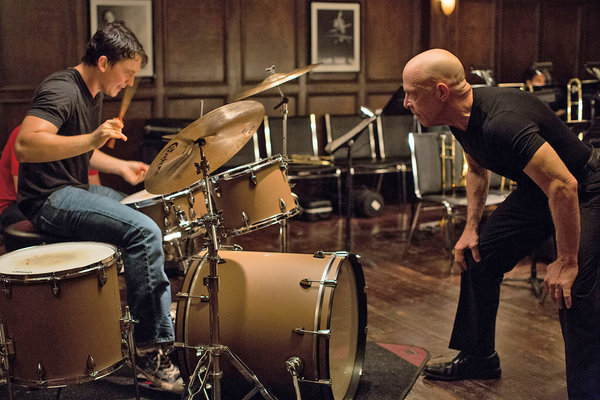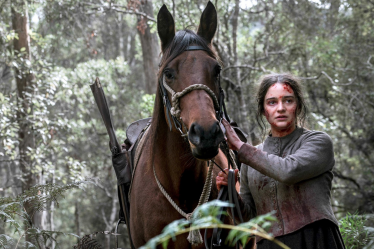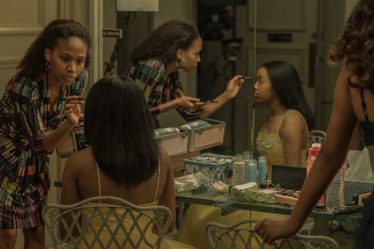
World famous artist Ai Weiwei has released a documentary about the global refugee crisis-Read Cinema Siren’s review and exclusive interview:
Human Flow is a new documentary directed and driven by world-renowned artist and activist Ai Weiwei. Although he has been making films for decades, this is his first to have a theatrical release. Human Flow feels like an immersive experience bearing witness to the global humanitarian crisis of displaced persons, shown across 23 countries worldwide. Watching this engaging film, audiences will be most moved by the dignity and resilience of the refugees, their stories, their suffering, and their tenacity.
The film has a structure that includes poetic quotes, interviews, and expansive cinematic images of the many refugee landscapes. Ai is known for saying “life is art, art is life. I never separate it.” It is clear from the film that he has taken that belief to heart. He is a refugee himself. As a child, he accompanied his father, a dissident poet, to labor camp, and then to live in exile for 16 years. In each location, Ai conducts interviews and asks people to share their experiences. He speaks to them with care, compassion, and sincerity.
The film also shows the refugees from an objective, distanced perspective, as they are seen attempting and committing to transforming their lives. Ai is using the aesthetic he has used in many of his art projects, that of transforming readymades, or culturally identifiable objects that are given little significance but actually speak to the nature of society. The displaced are everywhere, misunderstood, seen as a problem. Their humanity is undervalued. These people, trapped between countries, are trying to find new homes that will accept them. They are a part of global life. By showing them in their experience, he hopes to transform our understanding of them into something more. He does this through scale, geographic expansiveness, and the many moments showing everyday items we take for granted being cherished. For example, so many of the refugees come from lives where they experienced connection, having cell phones, running water, privacy, and electricity. We see scores of people with phones trying to charge at makeshift stations, sometimes hovering in the rain, for hours trying to get back some connectivity. People line up, for what we are told is often a full day, just to get a bowl of soup or bread. They are struggling to maintain a sense of belonging and basic personal value. Just when the audience imagines themselves in their place, Wei Wei introduces scenes with even more dire information, that is hard to wrap your head around if you aren’t there.
The many refugees that live in camps generation after generation are shown, making it almost impossible to contemplate how difficult their lives must be, but Weiwei and his fellow filmmakers continue to ask us to try.
The film is nearly two and a half hours. Once the viewer begins the cinematic journey, it simultaneously seems to stretch on forever, and finish in an instant. That is clearly by design. Ai asks us to spend only a fraction of the time the millions of refugees around the world spend struggling through their days, choosing to stay optimistic, choosing to hope for more. As the stories of Human Flow spread across the world from Afghanistan to Greece to Macedonia, Thailand, and beyond, we find ourselves yearning and wanting more for them, too, and it’s at once inspiring and heartbreaking.
5 out of 5 stars
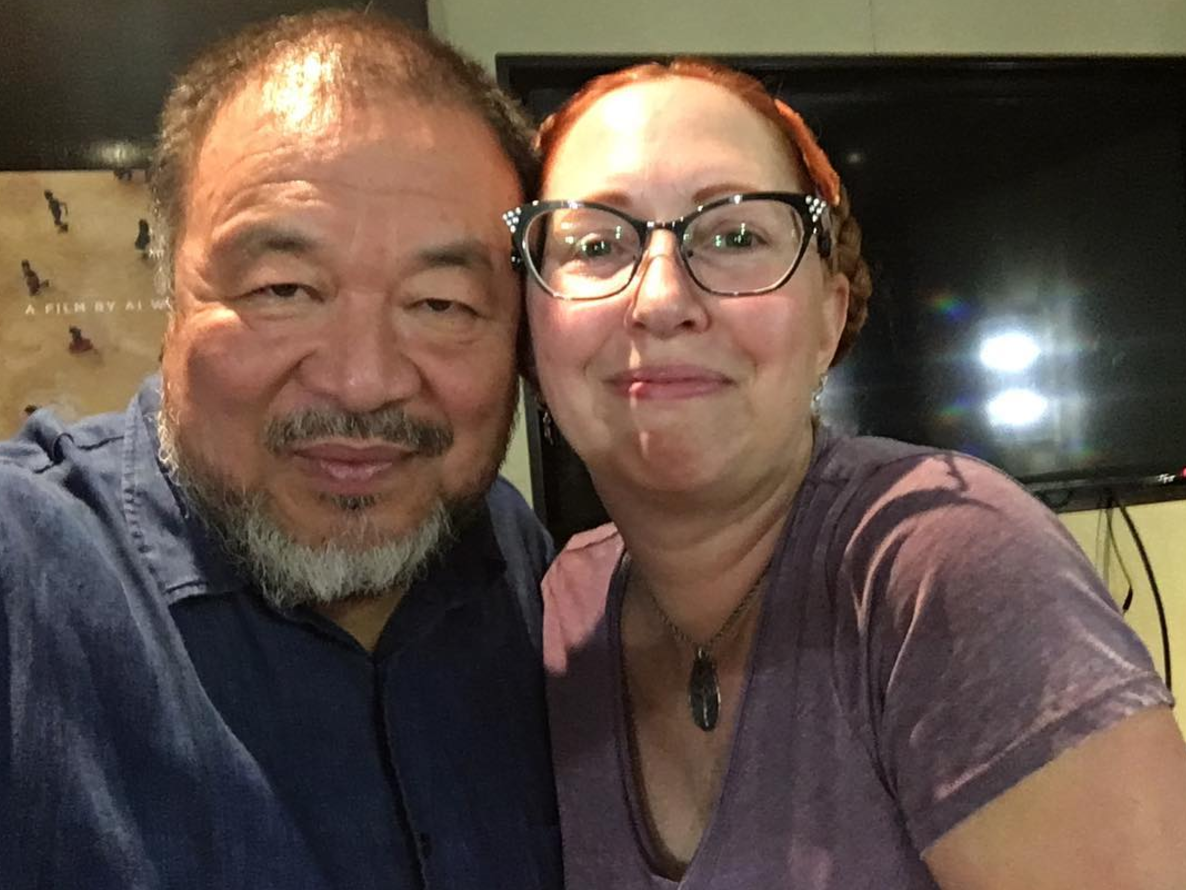
“My art is like a river. It flows. In every location, it changed my perspective of the world, and my point of view changed.”
An Interview with Ai Weiwei about his new film Human Flow and how it has changed him:
Leslie Combemale: Can you talk about collaboration and how working in so many different countries you were still able to put together such a cohesive look and artistic vision for the film, while still telling the stories of so many places and people?
Ai Weiwei: I worked in this capacity, as not only a director, but as the person making sure the film came together in a certain way, because for this movie there are so many very different situations, very different historical perspectives and also contexts in terms of religion, language, and geographic locations, you need a lot of help and people working together at the same time. Because this documentary is about what is happening right now, you cannot wait to finish one to move on to another one, it’s not possible, because it’s all happening at the same time. So for me, to use other people, especially in each country, was not a problem, it was essential. They are a lot of photographers, or even people who never even took professional photos or filmed before in our film. Many people in our film never touched a camera before. Today’s equipment though is very easy and some were very experienced war zone news photographers. They were used to capturing one type of story, because the news comes at you so fast, and you can miss something in seconds. They have to really come with a very dramatic, short structure, with fragments they put together.
Since I knew from the beginning what I wanted, as a director, I set up a kind of aesthetic discipline. So I told the people whoever my collaborators were, to understand what I want and what I don’t want. This is quite clear and easy to communicate. Also, I myself am a cinematographer. I went to film school. I have been doing documentaries for a long time, except I’ve never done one for theatrical release. I have enough understanding for the editing and structure for any piece of art relating to time to clearly create the structure. So I gave a very clear idea of what kind of images and what kind of moments we needed. I also had to explain why we didn’t want filming as if it’s a news story, because we cannot use that in our film for the reason that we wanted to show things in a more detached way, showing the misery of the reality but also showing from a few steps away so we can move from location to location. So that’s what we tried to communicate to them. Some are successful, some are not. We have many many hours of footage, and most of it is wasted. Some was just not usable and we had to change to another person. For example, some images were too arty, some is too like news, and they had this habit and we didn’t want to have images in the film like that. It was good to find that out quickly so we would have enough footage and it would be ok, because we were filming in so many locations and there were so many stories.
LC: So you were carving it, building it.
AW: Yes. I set up the concept because I know the reason and know how the structure is going to be, then I work with editor who also had the perfect understanding and shared my ideas about of the language and form. Of course we had 6 editors, and one master editor, Neils (Pagh Anderson), who was very experienced. It’s like cooking, it takes time for everything to come together, but as the director, I am putting all the ingredients together.
LC: Human Flow is, to me, so driven by the resilience of the people in it.
AW: It is the power of the film. My work has always been about things ready-mades, or what can be seen as cultural conditions. In this film, it is about all those trapped in war and the determination of the refugees trying to find a future for themselves and their children. You see them face the cold reality of Europe and the people or governments who don’t really help them, or try to help them, but come from the wrong perception that they are a problem to be dealt with. Not thinking about the human side of the condition. So that is a true challenge but the film still is positive. You see humanity struggling with the worst conditions and the worst situations but you see the people who lost everything or who gave up everything for the hope for their children or their family—you see the very brave side of humanity. These refugees are dealing with this struggle today and very probably into a distant future, and there will always be people victimized. We see them struggle with their whole hearts and the minds, but it is always bravely, and with imagination but also lot of sorrow and a lot of sadness and a lot of shame.
LC: I appreciate that you are the one there, since you experienced being a refugee yourself. I’m sure those memories influenced your interaction with them and how you felt when you were there.
AW: It’s hard to imagine that now, but so many people say I act so natural in the film in the camps. But for me, always, I realized I’m the same. I feel we have the same kind of body temperature, the way we look at life, and in dealing with the very difficult conditions they are in, because of my youth and my father being exiled for 20 years.. I grew up with him and I’ve been through it. I thought of that, I remember that, and I never felt they were ever different from me. I could completely understand them and feel for them.
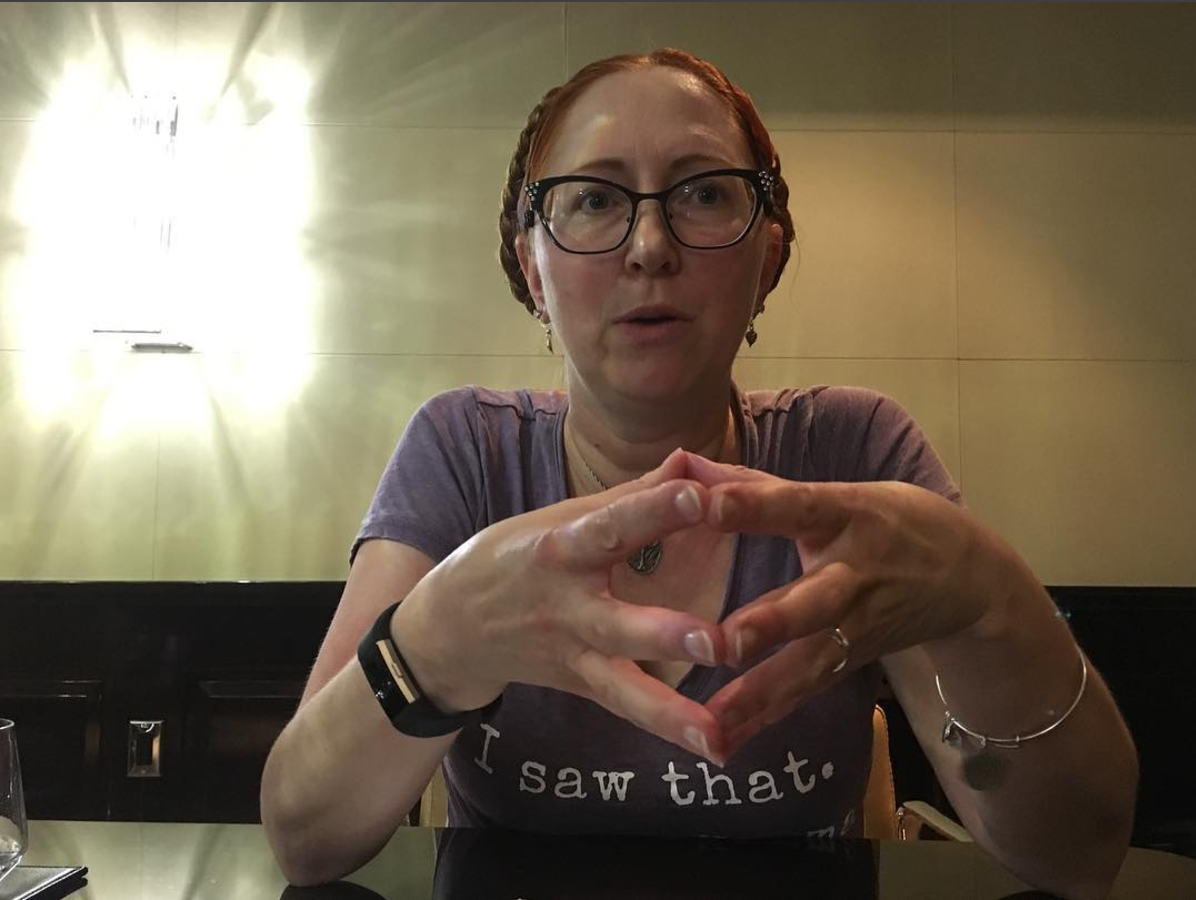
LC: The scene with the girls all together, where one of them has your art book, is both heart-wrenching and beautiful.
AW: It’s kind of ironic that these people can never travel as they want to, but they have an art book which is a very established in the west and of course this artist has a lot of privilege, but at the same time it’s being seen by people who never can even step out one inch from their border. Those young girls are beautiful and very modern, and they want and imagine what the outside is like, and so them holding a book about Ai Wei Wei and Andy Warhol is very ironic but for them it’s a very happy moment to see a very different life, and when we are young we don’t have the same kind of judgment and cynicism that always comes later. As young people we always want to see something new and something different. Because it’s so important as young people to let what happens to us construct a better human being. We never get enough information, because good or bad, we are incomplete as an individual. It’s beautiful to see them so hopeful and so open even in those conditions, but that’s what youth can do.
“I am glad to let the world change me.”
LC: How has working on this film changed your visual art?
AW: My art is like a river. It flows. In every location, it changed my perspective of the world, and my point of view changed. I think I’ve a much better understanding about humanity and about the politics and history and about Europe and Middle East and Africa. Those areas in my dreams I would never have thought I would go. As an artist it’s easy to just stay in the studio, you don’t have to ever leave. I chose to put myself in that, it was a complete challenge to break with my ordinary condition and put myself into foreign, unknown worlds. It’s so rich. It helps me so much and has changed me so much. If I had known how much, I would feel so regretful to not have gone to all these locations with those people and see their human struggle, and I would have the wrong impression of the world. That would be sad for an artist or for anyone. You live in this world for one life and you have a chance to know it and to share and learn and then that’s it. The time is up. You have to be deeply involved to understand the condition. You really have to be emotionally and physically involved, otherwise you become superficial and you just sit in your own little world and read news. It isn’t the same. I am glad to let the world change me.

